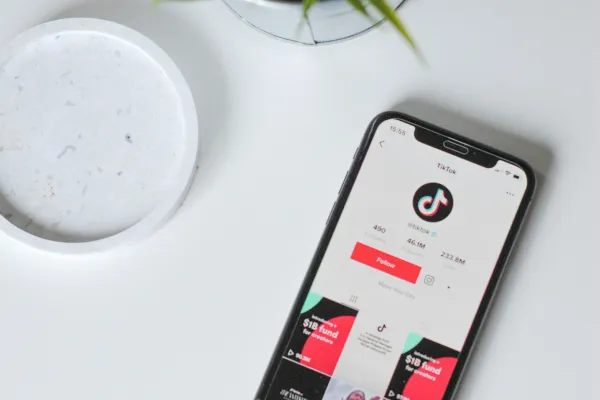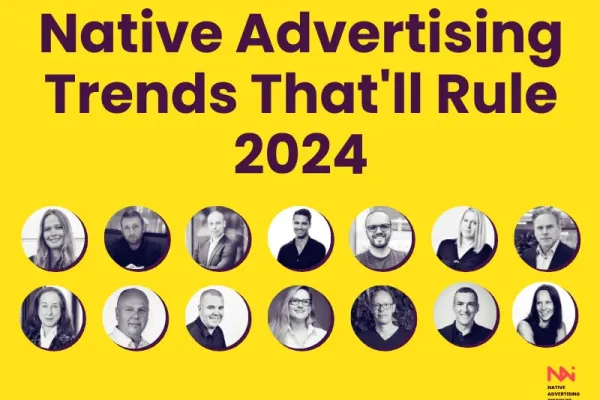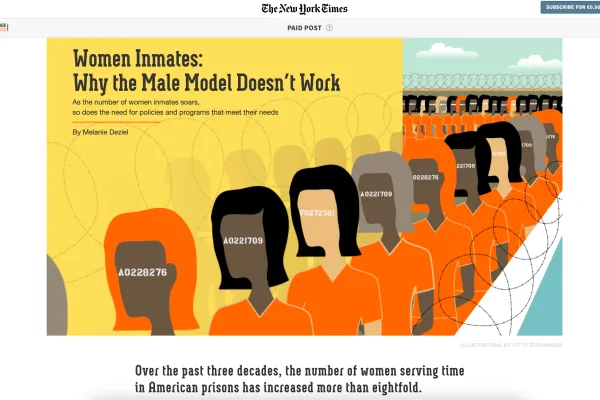
 Details
Details
At Schibsted, we are passionate about creating content that reaches, engages the audience and has an impact, and it is something that we have had the privilege of doing for ten years, through Partnerstudio in Norway and Brand Studio in Sweden, both of which were established in 2015.
When we look back, we can see that native is an advertising format that has gone from nice to have to need to have.
What was once a niche element in the media mix is now a strategic must for brands that want to create an impact and build long-term relationships with their target groups. This is of course very gratifying, and we dare say that native advertising will become even more important in the future.
With the Schibsted Native Report 2025, we want to share our collective knowledge and – above all – shine a light on the trends that shape the future of native advertising.
Because with AI, new formats and changing user behaviors, new opportunities are created, and we look forward to continuing to lead and drive the development of native advertising in close collaboration with customers, partners and colleagues throughout the industry.
Looking back at ten years of native
We won't lie. Leading the way for a new ad format hasn't always been easy.
It already feels like a different time, but during the first few years, critical articles in the trade press were interspersed with a lot of raised eyebrows internally in the editorial offices.
Advertising-branded articles in the middle of the home pages – what would that be good for? Would users understand that they were ads? Would it generate revenue for the media houses? And would our advertisers see any effects?
But time passed. Native matured and professionalised. In line with the changing behaviors and needs of users and readers, we developed new solutions and products. We became better at creating and measuring impact. And, most importantly, our customers saw what a fantastic job native does in their media mix – and chose to invest more and more.
After ten eventful years, we have learned a lot – and thanks to our customers, we have challenged ourselves to constantly evaluate and re-evaluate how we create content that users love and that has an impact for customers.
We often talk about native starting as a blank page on a homepage. Like a blank article, a video without content, or a podcast without audio. Then it’s up to us, together with our customers, to fill the void with the best content we can. Every time. Every day. All year round.
We’ve come a long way – but we’re far from done.
7 trends shaping the future of native advertising
1. From awareness to conversion–and everything in between
In the future native advertising will play an increasingly important role throughout the marketing funnel.
Don’t get us wrong; content will always do a great job mid-funnel. But the fact is that in recent years we have seen a clear trend where native is being used to drive conversions and sales further down the funnel.
With an increased focus on capitalising on user engagement, the ad format is expected to deliver even stronger ROI and high-quality traffic. Innovation in native is increasingly focused on relevance and tailored solutions that meet specific KPIs and campaign goals – through more stages of the buying journey.
As demands for measurability and business results increase, we will see solutions that not only build brands but also optimise strategies, design and functionality to achieve measurable success – no matter where in the funnel the needs arise.
2.5 seconds–that’s how much time 85% of all digital advertising gets, according to the Schibsted Attention Study, which mapped the attention span of users.
In contrast, native gets around a minute.
Long reading times create engagement, which both creates brand recollection and an opportunity to convince the reader to convert. So there is both the opportunity to build a brand or to drive conversion, depending on the brand's challenges and goals.
2. In the AI era authenticity is more important than ever
In a future – which is already here – AI-generated content will be created from already AI-generated content. A not entirely unproblematic loop, to say the least.
From that perspective, verifiable and unique original content will become increasingly important – for both editorial departments and the commercial departments that distribute content via news media.
Authenticity and verifiability are cornerstones of editorial work, and in a world filled with misleading material, these values are becoming increasingly important. Editorial tools and strategies are therefore central to brands that want to build long-term relationships – and create impact.
We see evidence of this, time and time again. When we weave in cases, meet real people and make content in real life, the impact increases. More people click on the article, more people watch and listen more – and longer.
The numbers in our real-time tools speak for themselves: authenticity and authenticity are still the black gold in content marketing.
Developments indicate that native advertising will play an increasingly important role in the media mix.
3. Scalable ideas replace single articles
In an era where the number of channels and distribution options is constantly growing, we see a clear trend towards scalable ideas that can be adapted for different formats and target groups.
The benefits for the advertiser are obvious: Cost-effective campaigns, a communicative common thread through all outlets and greater measurability for the entire campaign.
With the help of AI, a longer text can be effectively converted into podcast spots, quick video explainers or vertical videos – where all parts are designed to meet and engage specific target groups on their terms.
Through this versioning of content, we can create personalised overall campaigns where format, storytelling techniques and product recommendations create higher relevance for users – and more impact for customers.
4. No ideas without insights
Native advertising is facing a paradigm shift where data-driven insights and strategic ideation are increasingly driving the creative process. Native buyers are becoming increasingly keen on the RIGHT content being created, to ensure a successful campaign.
We experience that the insights behind the idea have become increasingly important in recommendations and pitches. What does user behavior look like? How do competitors act in the relevant industry? What trends and news affect users' mode, attitude and receptivity to the message the customer wants to communicate?
An idea can be as good as it gets–if it is not based on insights and strategy, it loses its value.
At the same time, the demands for impact measurement and reporting are growing, where ROI and the effect on various KPIs and brand parameters must be proven. Since the goal of native is to arouse interest, create engagement and influence attitudes, the burden of proof is high. And it will not decrease.
5. Collaboration is deepening–or disappearing
The way customers buy native is being pulled apart, driven by new technology and widely differing customer needs.
On the one hand, customers will continue to value the dedicated team that native providers offer, in the form of expertise throughout the chain from idea to production, optimisation and follow-up. These are primarily larger brands, with more complex offerings and a greater need for unique solutions and tailored native campaigns.
On the other hand, refined technology and AI will accelerate the automated trend, where some customers prefer to buy and execute larger parts of the native process via technical solutions rather than human.
In short: Interest in native advertising will only increase – but the way we work with customers will evolve and change.
6. More quizzes and chats
How can brands get more time with existing or potential customers? And how can they turn that time into impact for the advertiser?
There you have it, two million dollar-questions, at the same time.
Part of the answer: The level of interactive content such as quizzes, polls, chats, games and dynamic formats is increasing.
These components generate higher engagement according to all available data. Interactivity increases both user participation and brand visibility. Therefore, we can expect even more of this in native advertising in the future.
As advertisers increasingly focus on conversion, leads and sales, we will also see more live shopping, optimised CTAs and quick checkouts integrated into content.
7. JUST IN-native–the advertiser as a news broker
Relevance and timing are everything! More and more advertisers want to be visible in the news feed by tapping into current events, trends and hot topics.
Simply put: The more relevant a brand can be to its target group, the better business in the end.
This places increasing demands on speed and flexibility on both advertisers and native producers and agencies. But it is also a golden opportunity for news media to strengthen their positions in the market – as media houses become the way into the news feed, while editorial excellence is crucial for knowing HOW customers become relevant in the feed.
Excellence in, for example, headline setting, design and optimisation of content in real time are thus becoming increasingly important for successful native advertising.




